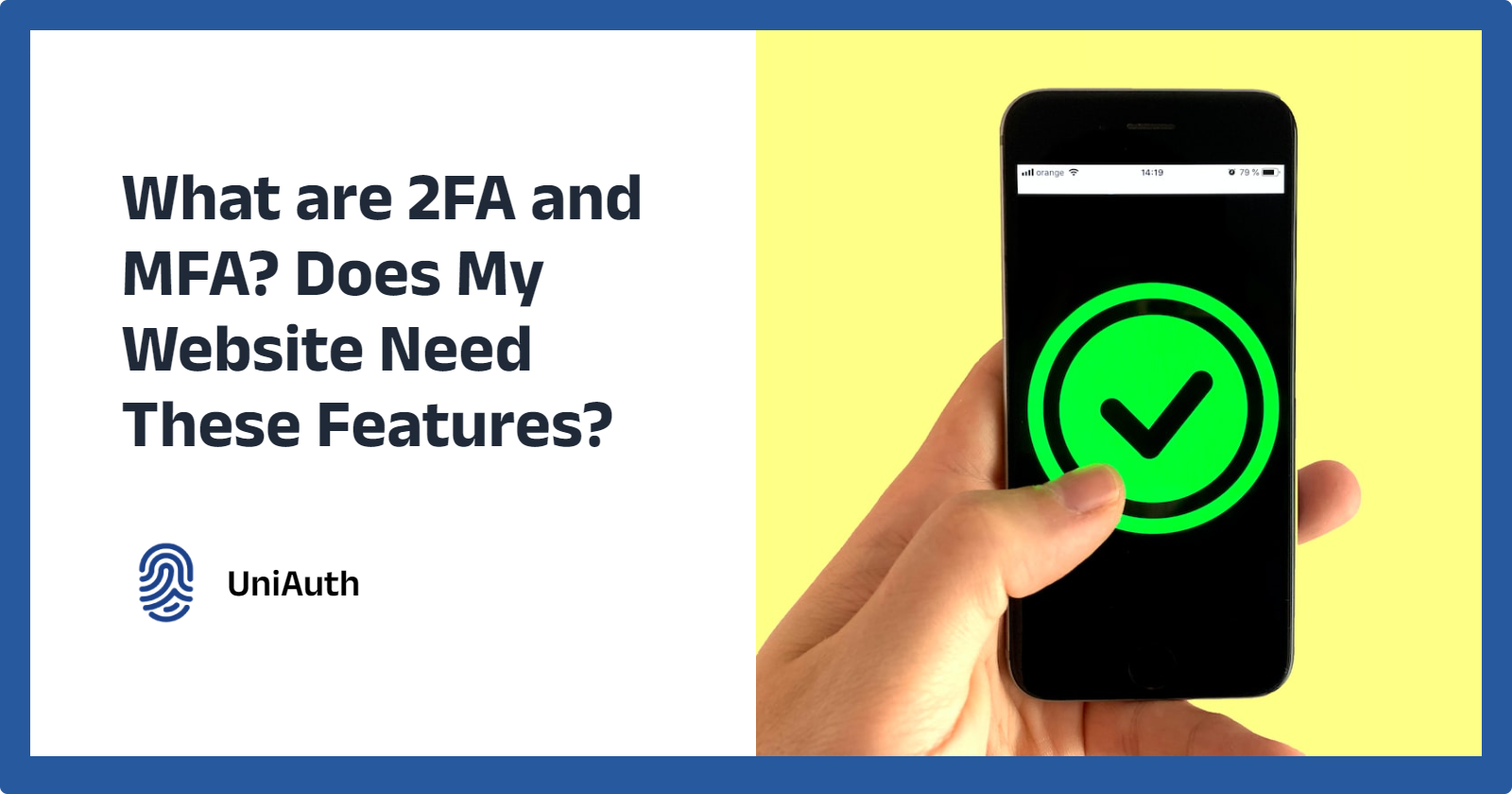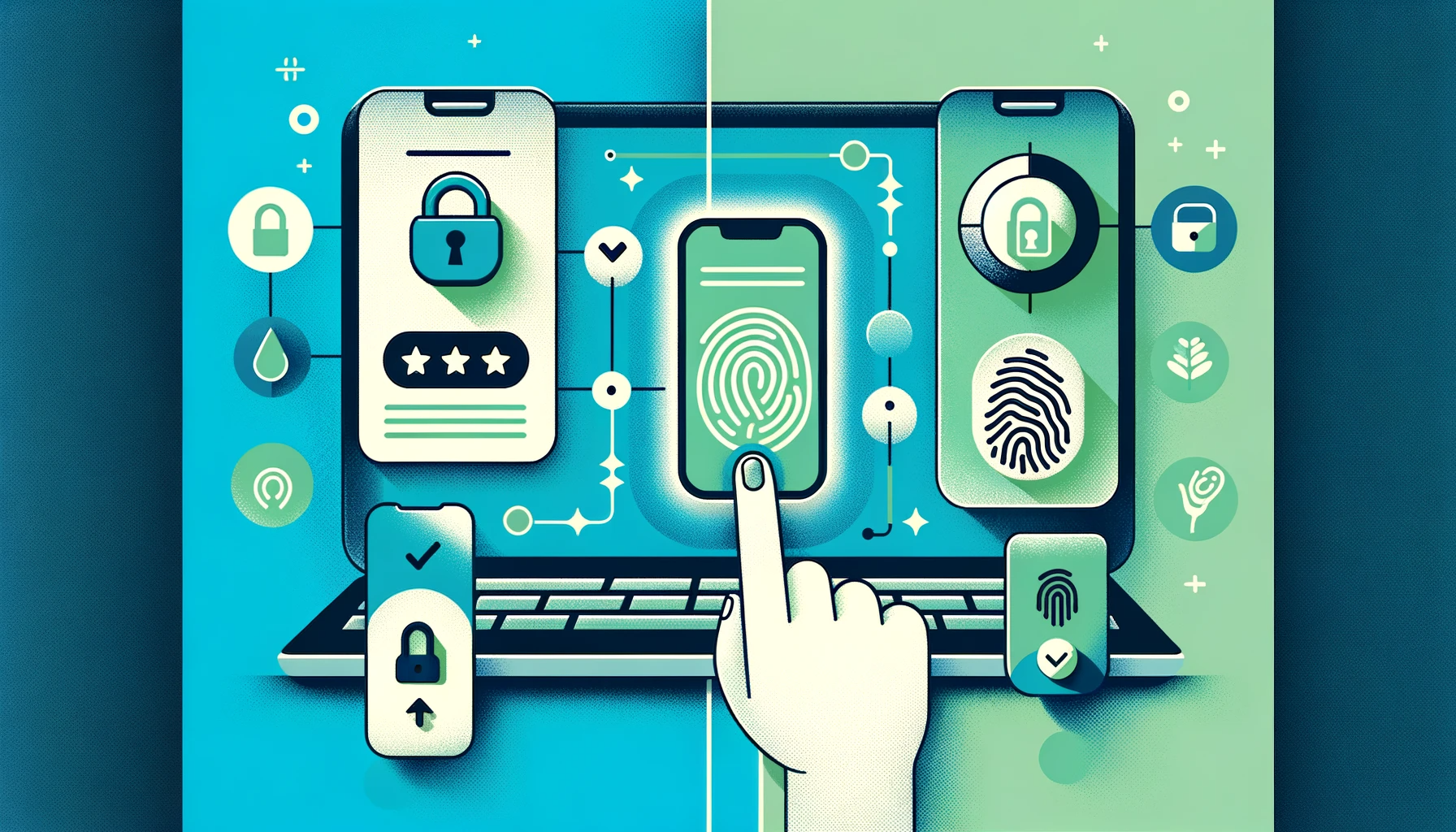[Secure 101] What are 2FA and MFA? Does My Website Need These Features?
 Simon Asika
Simon Asika
As digitalization becomes increasingly prevalent, we rely more on websites for various aspects of life and work, including shopping, banking, and social media. However, this convenience also brings many security risks. We often see news about online fraud, data breaches, and even identity theft, highlighting the importance of website security.
Website security is crucial for protecting users' personal information. Most account theft incidents stem from hackers stealing passwords to access websites. Therefore, to protect both users and their own interests, many international websites have started to implement different modes of identity verification, replacing simple password authentication.
About 2FA and MFA
Weaknesses of Simple Passwords
Passwords are our most common security verification method, but simple password systems have many flaws. First, the strength of a password largely depends on the user. If a user sets a simple password (such as 123456, or using personal information like birthdays), it can be easily guessed and breached by hackers. Secondly, even if a user sets a strong password, it cannot completely avoid threats like Website Phishing or Man-in-the-middle (MITM) attacks, as these often deceive users into revealing their passwords. Lastly, many users often reuse the same password across different websites, putting other accounts at risk if these passwords are leaked on any site.
The Importance of Identity Verification
Advanced identity verification methods, such as two-factor authentication (2FA) and multi-factor authentication (MFA), can significantly reduce the risk of password breaches. Even if hackers know the password, they cannot pass the second or additional layers of verification, thus protecting the user's account.
These advanced verification methods usually require users to provide three types of information:
Something you have (e.g., a mobile device to receive a verification code) Something you know (e.g., a password) Or something you are (e.g., a fingerprint or facial recognition) to confirm their identity. In this way, even if hackers know one type of proof, they cannot easily obtain the others, greatly increasing account security.
The Concept of 2FA and MFA
Therefore, in recent years, internet security has gradually adopted more robust verification methods, known as two-factor authentication (2FA) and multi-factor authentication (MFA).
2FA, or two-factor authentication, means adding a second layer of security verification to the traditional password authentication during the login process, such as SMS codes, email verification, fingerprint recognition, etc., greatly enhancing account security.
MFA, or multi-factor authentication, adds two or more verification methods during the verification process. These methods may include passwords, biometric recognition, behavioral characteristics, etc.
By using these two verification methods, we can effectively enhance website security, preventing unauthorized access and data theft.

What is 2FA (Two-Factor Authentication)?
Two-factor authentication (2FA) is a method of enhanced security verification that requires users to provide two different forms of identity proof for authentication. These two proofs typically come from the following three categories: information the user knows (such as a password), an object the user possesses (such as a mobile phone receiving a verification code), and the user's physical characteristics (such as fingerprints or facial recognition).
How 2FA Works
When a user attempts to log in or perform certain sensitive operations, the system first asks them to provide one form of identity proof, usually a password. Then, the system requests a second form of proof, such as a verification code sent via SMS to the user's mobile phone, or data from a biometric device (like a fingerprint scanner). Only when both forms of identity proof are correct will the system authenticate the user.
Common 2FA Verification Methods
SMS Verification: The system sends a verification code to the user's mobile phone, which the user must enter on the system to proceed.
Email Verification: Similar to SMS verification, but the code is sent to the user's email.
Biometrics: Includes fingerprint recognition, facial recognition, or retina scanning.
Hardware Security Token: Such as YubiKey or Google Titan, where users need to insert these physical keys into a computer or contact them with a mobile phone via NFC for identity verification.
Advantages of 2FA
Enhanced Security: As it requires two forms of identity proof, even if one is known to hackers, they cannot proceed, thus enhancing account security.
Reduced Identity Theft: Even if the password is cracked by hackers, they cannot mimic the user's biometrics or obtain physical security keys, significantly reducing the risk of identity theft.
Disadvantages of 2FA
Reduced Convenience: Users need to complete two verifications, which may be troublesome, especially in situations requiring frequent logins.
Additional Device Needed: Some 2FA methods (such as biometrics or physical security keys) may require specific devices, potentially increasing usage costs.
What is MFA (Multi-Factor Authentication)?
Multi-factor authentication (MFA) requires users to provide more than two forms of identity proof to enhance account security. These proofs still originate from the following three categories: information the user knows (such as a password), an object the user possesses (such as a mobile phone or security key receiving a verification code), and the user's physical characteristics (such as fingerprints or facial recognition).
How MFA Works
Similar to 2FA, when a user attempts to log in or perform sensitive operations, the system asks them to sequentially provide multiple forms of identity proof. Each proof must pass before the system authenticates the user. By requiring users to provide more types of identity proof, MFA offers multiple layers of security.
Common MFA Verification Methods
SMS Verification + Password + Biometrics: A very common MFA method where users need to provide these three proofs to log in.
Hardware Security Token + Password + Biometrics: This method is often used in high-security environments, such as government or military facilities.
Advantages of MFA
More Security: As it requires multiple forms of identity proof, even if hackers obtain one or two proofs, they cannot pass all verifications, greatly enhancing account security.
More Comprehensive Protection: MFA, by combining various forms of identity proof, can combat different threats, providing more comprehensive protection.
Disadvantages of MFA
Reduced Convenience: Similar to 2FA, MFA requires users to complete multiple verifications, which may make the login process cumbersome.
Additional Device Needed: Some MFA methods may require specific devices, such as biometric devices or physical security keys, potentially increasing implementation costs.
Does My Website Need 2FA or MFA?
When to Use 2FA or MFA
If your website stores or processes sensitive data, such as personal information, credit card details, or other data that can be maliciously used, you should consider using 2FA or MFA. Especially in the current climate of rampant cyber attacks, using advanced verification methods to protect your website and your users is essential.
2FA and MFA Applications on Different Websites
Various types of websites can benefit from 2FA or MFA. For example, e-commerce sites can use 2FA or MFA to protect customer payment information; social networking sites can use it to prevent account theft; medical websites can use it to ensure patient medical records are not accessed by unauthorized individuals.
How to Implement 2FA, MFA on My Website
Setting up and implementing 2FA or MFA may require professional technical knowledge. Fortunately, many third-party services, such as Google Authenticator, Authy, or Duo Security, offer easy-to-implement solutions. You can choose the right service to implement 2FA or MFA based on your needs and budget.
2FA and MFA play a key role in enhancing website security. Although they may reduce convenience, it is worth it compared to protecting user information security.
Regardless of your business size or website scale, its security should be taken seriously. If you want to learn how to implement 2FA, MFA on your website, or if you plan to build a new website and value its security, you are very welcome to consult with us. UniAuth and LYRASOFT has many years of experience in enterprise-level website development and can build a strong and complete website platform for you.
Subscribe to my newsletter
Read articles from Simon Asika directly inside your inbox. Subscribe to the newsletter, and don't miss out.
Written by
